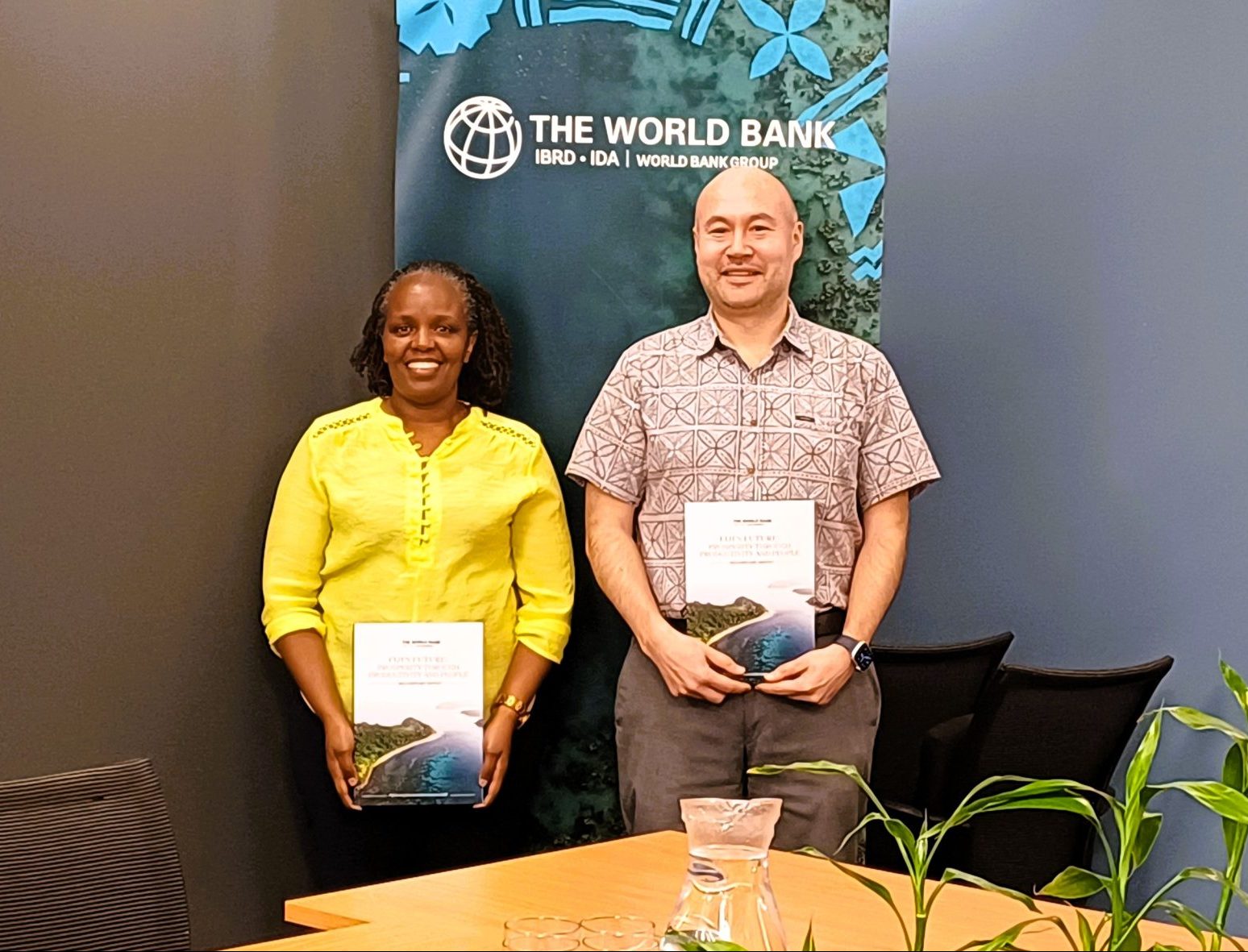THE State owns shares in 59 companies in Fiji, more than double the 24 that Government officially lists as State-Owned Enterprises (SOEs) in its 2025-2026 national budget.

This has been determined by the World Bank in its report titled: “Fiji’s future: Prosperity through productivity and people”, its first ever Country Economic Memorandum (CEM) for Fiji.
The Fiji CEM 2025 outlines policy recommendations in a number of areas to help boost growth and help achieve its aspiration of becoming a high-income country by 2050, a target set in the new National Development Plan 2025-2029 (NDP).
One way for this growth to happen, according to the report, is for Government to put in place policies that minimise anti-competitive business practices and to gradually remove price controls in competitive sectors.
But State involvement in the market through “businesses of the State” has been identified as a barrier, with the tendency for Government to take a protectionist approach qualifying as anti-competitive behaviour.
“We do see that Fiji has some anti-competitive biases here and there. So there are specific recommendations coming out from our side especially in terms of Fiji’s state presence,” World Bank senior economist Mehwish Ashraf said at the launch of the report last week.
“State presence means that the government has a lot of ownership of the businesses that are happening in the country.
“Typically, we call it state owned enterprises, but it’s even more than state owned enterprises.
The new methodology that we have rolled out, and Fiji is one of the countries where we have done this analysis, is also looking at institutions, into businesses, into organisations where [the State] has a stake of 10per cent or more.
“So, it’s not just as a majority shareholder as is the case in the state-owned-enterprises, but also even businesses in which it has less than 10per cent of the total shares because that still gets government a foot in the operations of those businesses.”
Ms Ashraf had led a World Bank team of about 30 staff over a period of “a couple of years” to compile the Fiji CEM 2025.
The new methodology used showed that in 2019, Fiji’s ownership footprint extended to 59 domestic business entities, where the Ministry of Communications held 18, another 12 were linked to the Fiji National Provident Fund, seven with the Ministry of Finance and four to the Ministry of Agriculture.
Other notable holdings included the Ministry of Public Enterprises, the Ministry of Tourism and Civil Aviation and the Ministry of Forestry.
Fiji, Ms Ashraf said, could take a leaf out of Samoa’s state footprint, which they determined was around four per cent of its market, compared to six per cent in Fiji.
“What we are suggesting here is that we do see that Samoa’s level of market coverage for state presence is less than Fiji, so there is some inspiration within the Pacific for Fiji to emulate.”
The rationale is the more involved a State is, the higher the tendency for bias.
Instead of having its finger in every pie, Government could put the estimated $100million or one per cent of GDP locked in these entities to better use.
“What if Fiji reduces its state presence to Samoa’s level? This would free up at least FJD 100 million (1 per cent of GDP) for more productive uses, such as investment in roads and logistics,” the report argued.
To be able to unleash competition to fuel economic growth and to be so involved in the same market are mutually exclusive.
“This is where the competition part comes into play because we do believe that when a government enters into these businesses, it distorts the markets from a competition perspective,” Ms Ashraf said.
“There could be preferential treatments for those businesses which would play against private sector businesses which do not have any stake of government.
“That’s not a level playing field, so it’s important that all these firms, whether they have a government stake or not, are subject to the same set of rules.”
The Fiji CEM 2025 recommends that the Government:
- – Map the full extent of state ownership. Introduce a minimum performance target for SOEs operating in competitive sectors such as hotels and food service activities, financial activities, and manufacturing. Regularly monitor their performance, especially those in competitive sectors and those that are unprofitable. Subject all enterprises to same set of rules, regardless of ownership (public, private, domestic, or foreign) in competitive sectors.
- – Rationalise the state presence in the economy. Limit state ownership to firms operating in sectors where the state presence is needed, for instance where private fi rms cannot exist due to market failures. Divest from or liquidate persistently loss-making state businesses operating in sectors where private fi rms could be viable (eg: manufacturing and agriculture).
To ease price control in competitive sectors – price control was also identified in the Fiji CEM 2025 as a hindrance to competition – the World Bank recommends its re-examination and gradual reduction while ensuring fair pricing and protection for the poor.
Firms must also be encouraged to contest price control decisions made by the Fijian Competition and Consumer Commission (FCCC).
“We see price controls as very prevalent in Fiji, but we also understand that there is a social dimension to it, so it’s important to ensure fair pricing and through targeted cash transfers,” Ms Ashraf said.
“And we also see that despite the FCCC being in place, there’s still some hesitation from firms to be able to contest those price control decisions, so that needs to happen and the mandate of the FCCC needs to be much more articulated better and implemented.”
Ms Ashraf said the World Bank is willing to help the Government implement recommendations in the report.
—
Note: This article was first published under the headline: Unlocking the $100m in SOEs in Page 14 of the print version of The Fiji Times dated Monday, September 29, 2025



